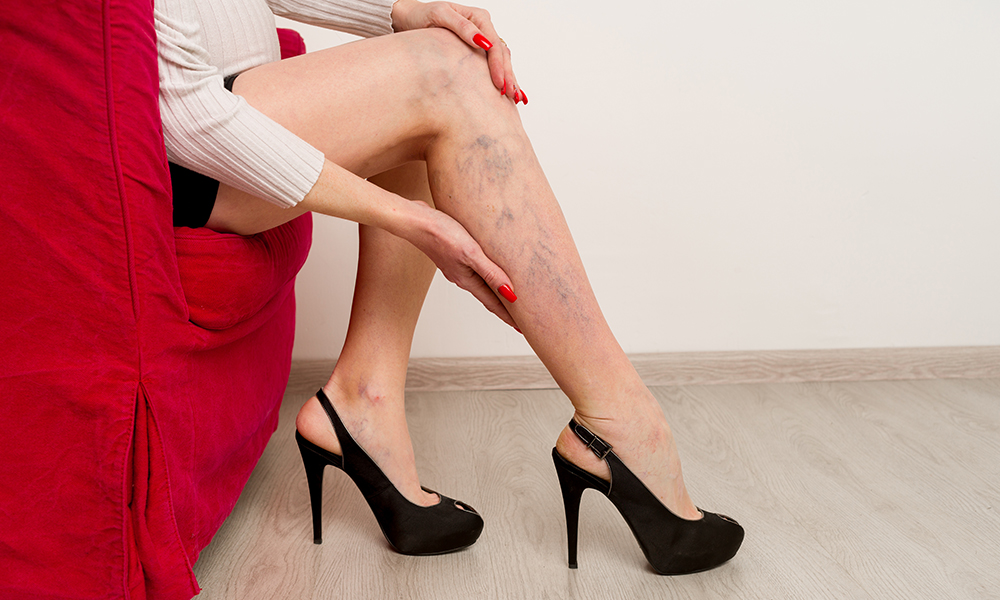-
 Toll Free No 9146-744-744
Toll Free No 9146-744-744 - Appointment
Did you notice black, blue, or purple veins on your legs and feet?
It can be Varicose Veins!
Caused by the damaged valves in the veins ultimately cause blood to pool in the veins. Varicose veins are one of the commonest problems found both in men and women. Women may have a higher rate of experiencing the disease. Around one-fourth of women encounter problems related to varicose veins.
Varicose veins are twisted, swollen veins that typically develop in the legs and feet. Damaged veins experience difficulties in sending blood from the legs to the heart, causing the veins to expand, thicken, and twist. Leg heaviness, weariness, hurting, burning, swelling, discoloration, and ulceration are all symptoms of varicose veins.
For many of them, varicose veins and Spider Veins (mild variations of varicose veins) can simply be a cosmetic concern, but for a few, it can cause aching pain and discomfort that needs to be treated and lead to more serious issues later.
Several factors can lead to your veins being damaged including:
The process is always performed under ultrasound guidance providing the doctor a live view of the damaged veins for accuracy and safety. The catheter is inserted with a laser into the vein which directs it through it to heat and shut the walls of the vein. This prevents blood from flowing through the damaged veins as a result, the damaged vein shrinks and eventually disappears over time.
Non-invasive treatment.The problematic veins are heated with radiofrequency waves delivered through a needle during this operation, causing the blood to flow through healthy veins.
Non-surgical technique.A sclerosant solution is injected directly into your veins. The solution then forces the blood to flow through healthy veins by imploding the damaged veins eventually disappearing later.
Traditional technique comprises the tying of the damaged vein before it joins the deep main vein. Small cuts or incisions are made and the vein is tied through these cuts which won’t allow blood flow within them.
Performed under Anesthesia. The expert removes smaller damaged veins through several cuts and incisions. The part of the leg is under anesthesia where cuts are been made. Scarring is usually minimal in this procedure and the patient may go home immediately after the procedure.


Copyright © 2023 hospione.com - All Rights Reserved | Developed by Digital Marketing StudioGenix LLP